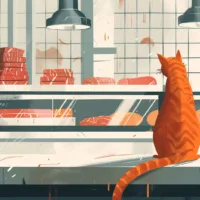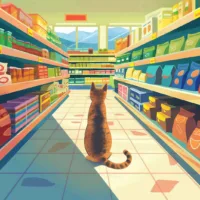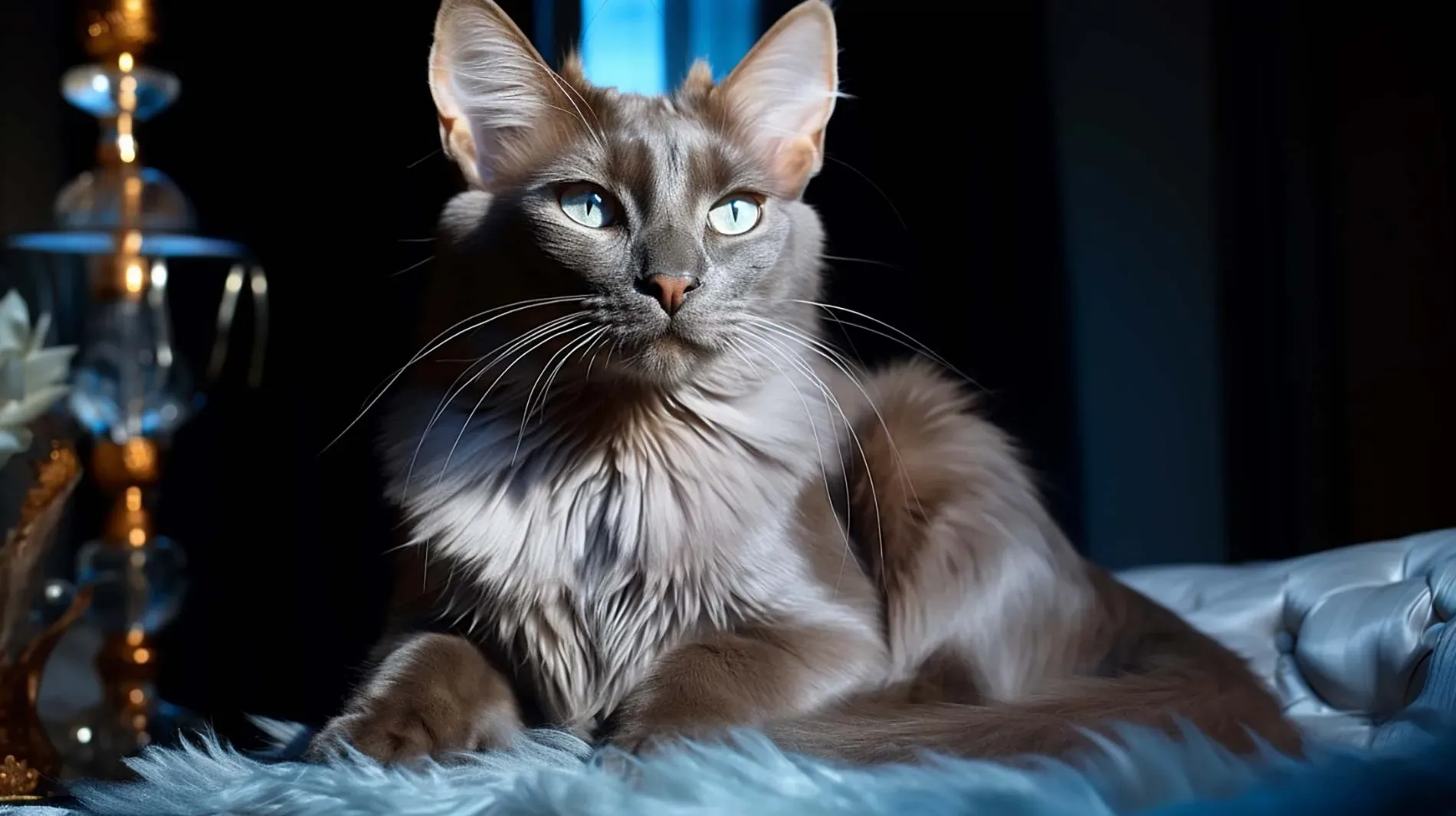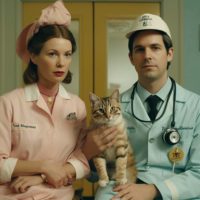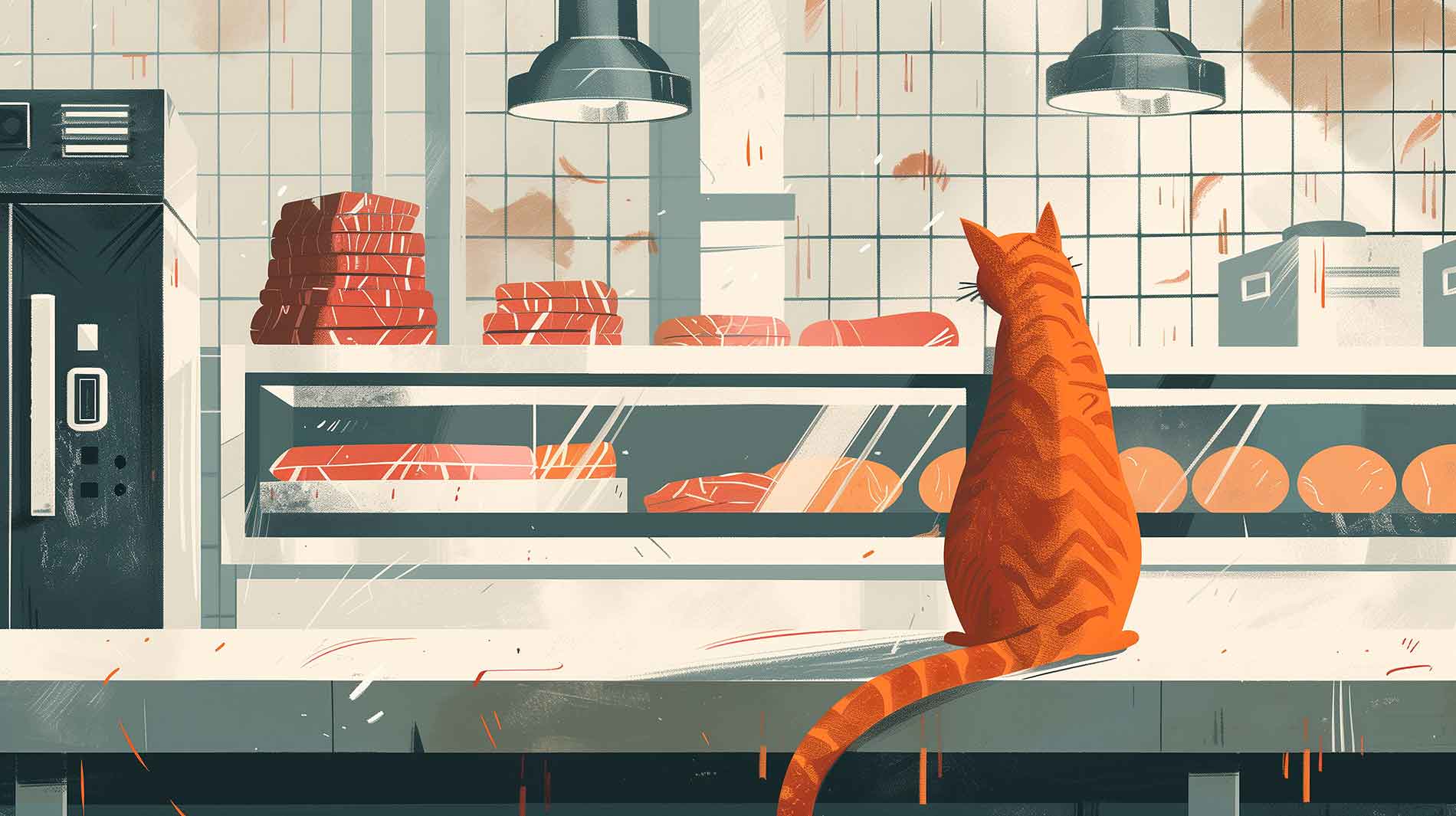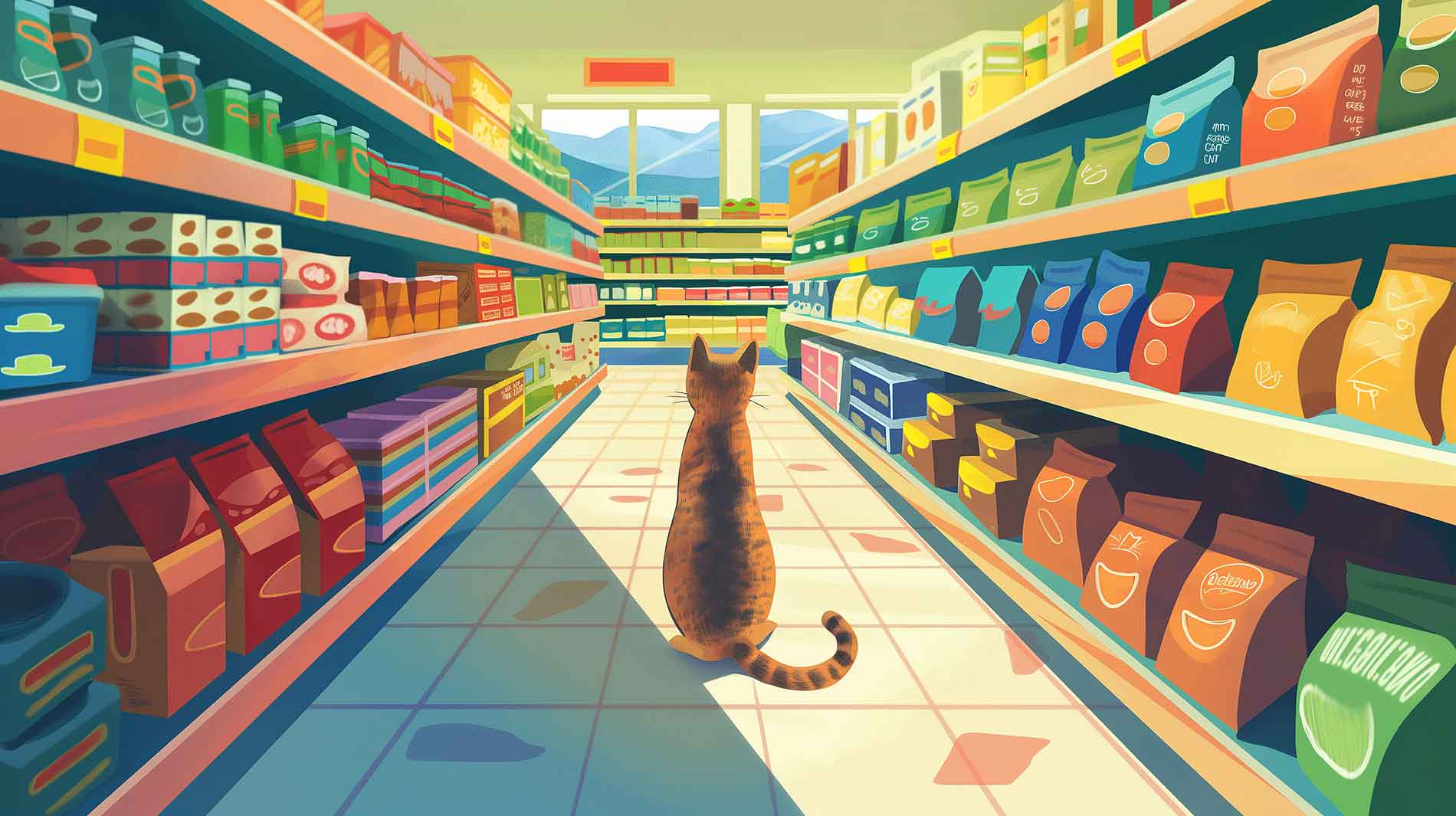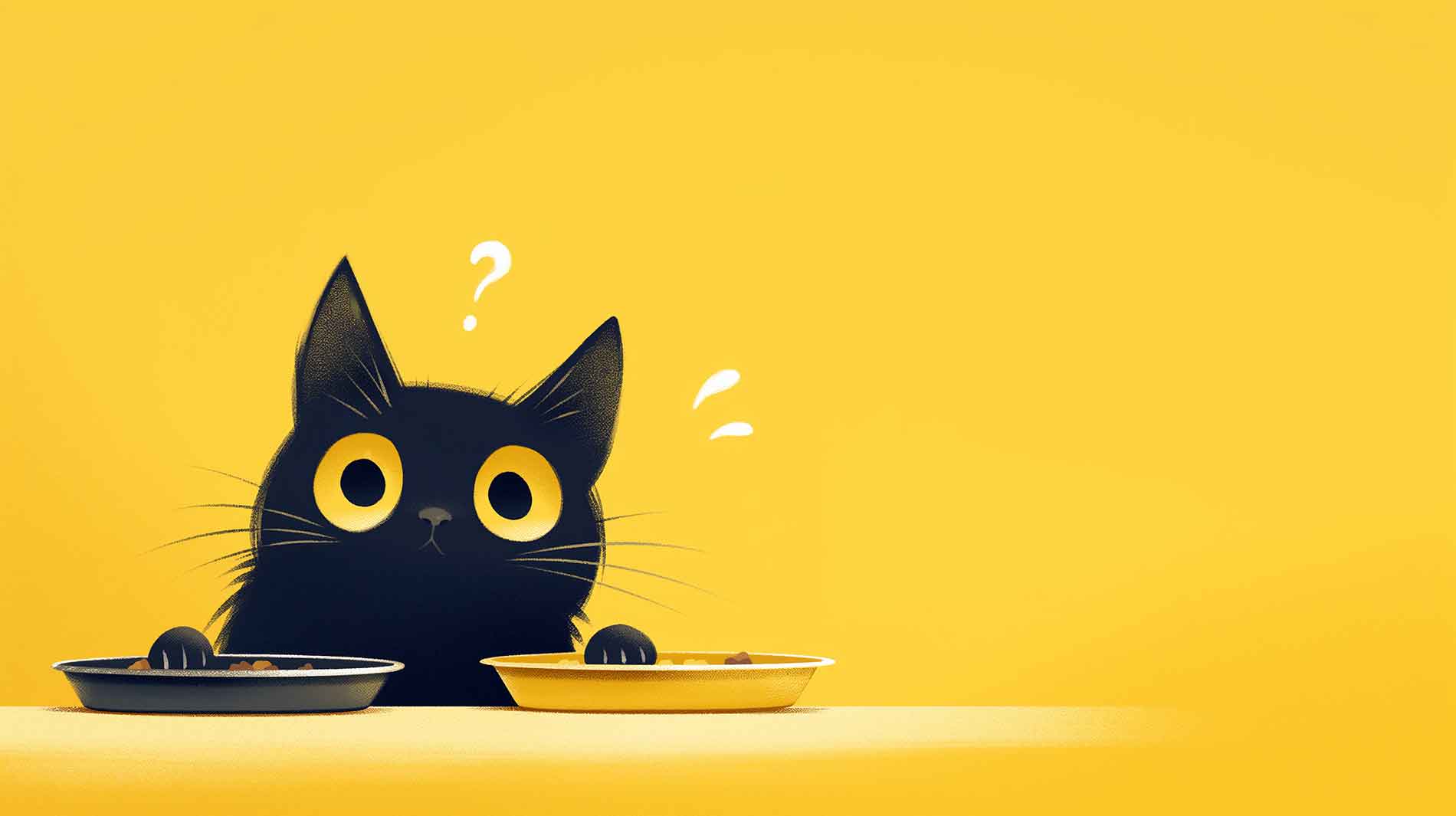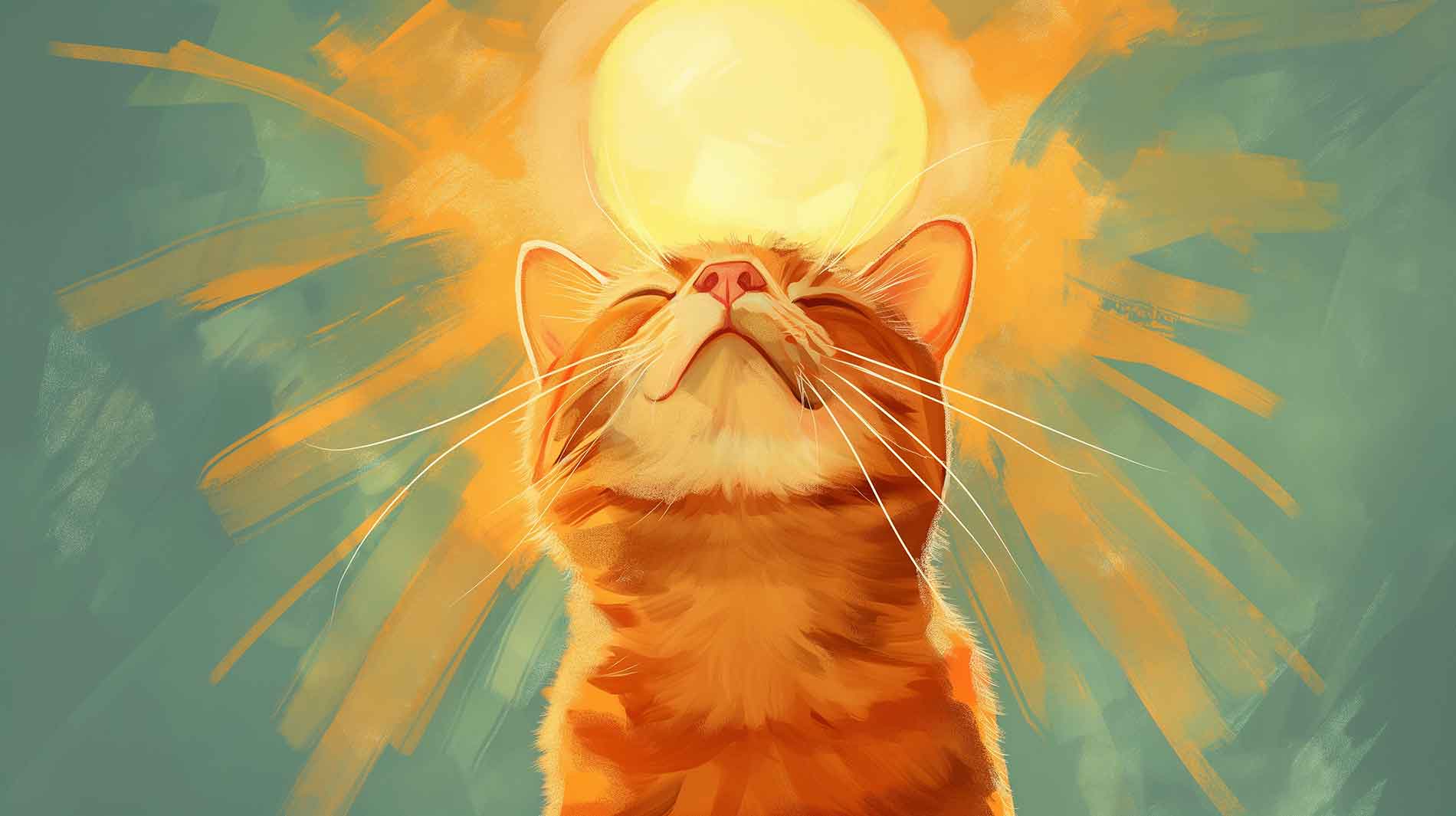There are many factors that contribute to your cat’s shiny coat, but today our spotlight solely focuses on what you put into your cat’s food bowl. This article will delve deeply into the essential ingredients that help maintain a radiant appearance and healthy skin. Prepare for an in-depth exploration of the science behind your kitty’s glossy look.
What does food have to do with your cat’s coat?
When your cat chews food, the chemical digestion process starts, transforming the meal’s components into simpler forms. Here’s an overview of how a meal enters through the mouth and ends up in your cat’s fur and skin:
- Mouth: When your cat chews food, enzymes in the saliva start breaking it down. This prepares it for further digestion.
- Stomach: Stomach acids and enzymes like pepsin and lipase convert the food into a semi-liquid form. Known as chyme, this sets the stage for nutrient splitting and absorption in the small intestine.
- Small intestine: Digestive juices from the pancreas and other sources take over, continuing the breakdown process.
- Proteins are split into individual amino acids and dipeptides. Hair contains over 90% protein and constantly regrows along with the skin. Thus, about one-third of the proteins your cat consumes go toward maintenance and regrowth.
- Fats are converted into monoglycerides, diglycerides, glycerol, and free fatty acids (FFAs).
- Carbohydrates are simplified into sugars like glucose, fructose, and galactose. They deliver energy for your cat’s metabolism.
- The inner lining of the small intestine has tiny hair-like projections, called villi. These absorb simplified nutrients like amino acids, simple sugars, and fatty acids into the bloodstream.
- Large intestine: Here, the body absorbs the most overlooked nutrient, water, aiding in hydrating your cat’s skin.1
In short, the main part of the work to get nutrients broken down is happening in the small intestine. Here, they move into the lining. Then they enter the bloodstream and travel to areas where needed, including your cat’s skin and coat. Now, let’s delve into the essential nutrients responsible for constructing your feline friend’s hair and skin.
Which nutrients build cat hair and skin?
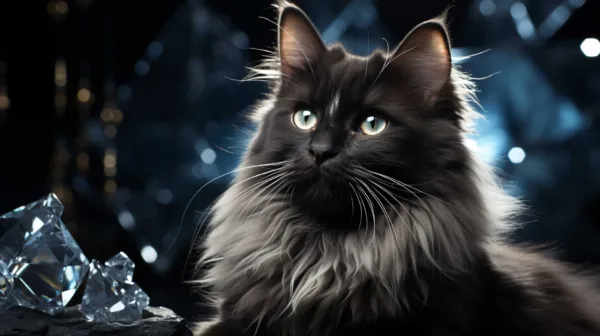
Your cat’s hair consists of almost only protein while her skin is made of both, proteins and fats. This intricate composition is nourished by the nutrient-enriched blood from the small intestine. Through its journey into the dermis, it supplies the epidermis through its network of blood vessels.
- Amino acids become the building blocks for keratin, a protein produced by specialized cells called keratinocytes. This keratin is the primary component of hair and skin and is essential for their structure. Keratin production is particularly critical in the epidermis and skin appendages, like hair follicles.
- Fatty acids, especially linoleic and arachidonic acid, nourish the epidermis by contributing to the health of the cell membrane. They not only protect the skin cells but also help in retaining moisture, providing a natural glow to the skin and hair. These fatty acids also influence the composition of sebum secreted by oil glands, contributing to a healthy, shiny coat.
- Carbohydrates provide the energy required for these cellular processes. They are particularly vital for maintaining the metabolic activities in the dermis, which is rich in blood vessels responsible for nutrient supply.
- Water hydrates the skin and fur. It is particularly crucial for the epidermis, where it helps maintain the skin’s barrier function, and the subcutis, where it contributes to the overall health of this innermost layer.1
This intricate relationship between various nutrients and skin layers demonstrates the essential role that diet plays in maintaining your cat’s radiant appearance. But there’s still more to learn.
Vitamins, minerals, and trace elements


Beyond the mentioned macronutrients, your cat also needs a balanced intake of essential micronutrients. Each of these contributes in a unique way to the health of her skin and coat. We will break down these crucial micronutrients into their respective categories for a better understanding of their individual meaning for your furry friend’s appearance.
The roles of vitamins
- Vitamin A: Known for its role in vision, this vitamin also contributes to skin health by promoting cell growth and differentiation. It is particularly vital for the epidermis, where it aids in the regeneration of skin cells. A deficiency or excess can result in hair loss, poor coat condition, hyperkeratinization of the epidermis and hair follicles, skin lesions, scaling of the skin, and increased susceptibility to secondary bacterial infections of the skin.
- B Vitamins: These vitamins, including Biotin (B7) and Riboflavin (B2), are essential for the health of skin and fur. They are especially important for the dermis, where they help in metabolic activities, and contribute to the natural shine of your cat’s coat. Deficiencies can lead to dry skin, hair loss, a dull coat, and dermatitis.
- Vitamin D: It ensures the efficient utilization of calcium and phosphorus in the dermis. In extreme cases of deficiency, one might expect an overall decline in health, which could indirectly affect the skin and fur.
- Vitamin E: This antioxidant vitamin is crucial for protecting skin membranes from oxidative damage. It is vital in the epidermis and dermis, where it helps in maintaining skin elasticity, and hydration, and supports the production of sebum, the natural oil that keeps the skin moisturized and the coat shiny.
Importance of minerals and trace elements


- Zinc: A mineral important for the metabolism of cells, their division, and the synthesis of fatty acids. It supports wound healing and maintains the structural integrity of skin and hair follicles. The highest concentration of zinc is found in the basal (innermost) layer of the epidermis.
- Calcium and Phosphorus: These minerals support cellular activities like cell differentiation throughout the skin layers.
- Selenium and Copper: These trace elements work as antioxidant enzymes protecting the skin from free radical damage. Selenium supports sebum production while copper contributes to the strength and flexibility of hair. Furthermore, it converts tyrosine to the pigment melanin, and participates in the creation of tissue.1
How to ensure your cat gets all nutrients needed for shiny fur
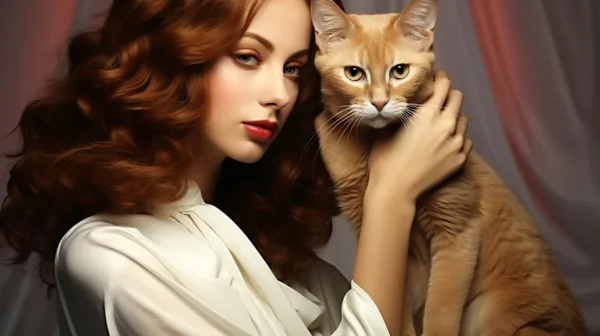
Manufacturers usually formulate commercial cat foods to meet the standards set by pet food associations, like the American Feed Control Officials (AAFCO), for the minimum nutrient levels required for adult cats. This ensures they contain adequate levels of proteins, fats, vitamins, minerals, and trace elements. To be able to meet those guidelines, manufacturers work with veterinary nutritionists and researchers to continually improve formulas based on the latest updates to feline nutrition guidelines. However, it’s crucial to note that not all commercial cat foods are of the same quality.
The importance of quality protein in your cat’s diet
High-quality proteins are “highly digestible and contain all of the essential amino acids”1. These are crucial for the synthesis of keratin, the primary protein in your cat’s skin and fur. “Highly digestible” means your cat can absorb protein easily, meeting her amino acid needs without extra food. In contrast, lower-quality proteins often lack a complete amino acid profile. As a result, your cat may need to consume more of her sustenance to meet her nutritional requirements, which can lead to obesity and stress, especially in older cats. To ensure that your cat receives a well-rounded array of nutrients, it’s beneficial to incorporate a diverse selection of top-notch foods in her diet. Including a variety of different high-quality foods in your cat’s diet not only exposes her to different ranges of nutrients but also lowers the risks of relying solely on one source of possibly low-quality protein.1
Additional factors that make a balanced cat food
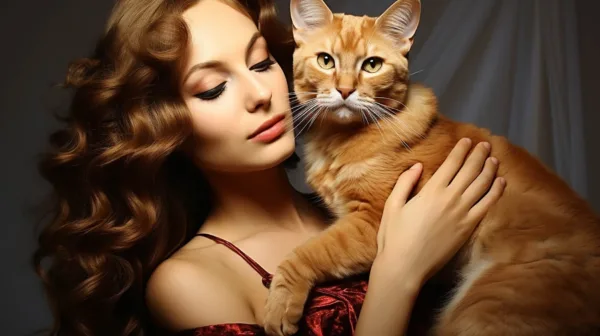
- Nutrient integrity: Lower-quality foods are typically processed at high temperatures, which can degrade the nutritional value of the original ingredients. High-quality foods often use gentle cooking methods to preserve the nutritional integrity of the ingredients. This ensures that your cat benefits from the full range of nutrients contained in the food, promoting optimal skin and fur health.
- Adequate hydration from wet food: Only wet food offers the moisture necessary to keep your cat well-hydrated, which is essential for maintaining healthy skin and coat as well as overall well-being. Dry food does not provide sufficient moisture to keep your cat adequately hydrated. Lack of proper hydration can lead to skin and coat issues, as well as increase the risk of urinary tract problems.1
By opting for high-quality wet food, you are far more likely to provide your feline friend with the essential nutrients required to keep her looking and feeling her best. We hope you find these insights about your kitty’s metabolism valuable and inspiring. If you did, share this article with your friends! By spreading knowledge and support, we can make a positive difference in the lives of our beloved cats!
